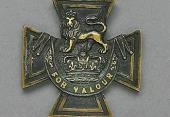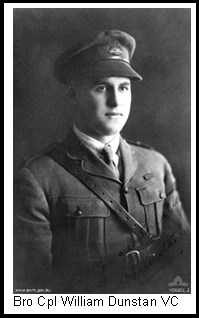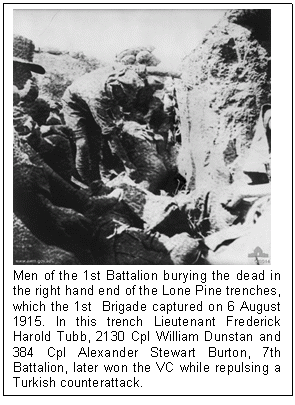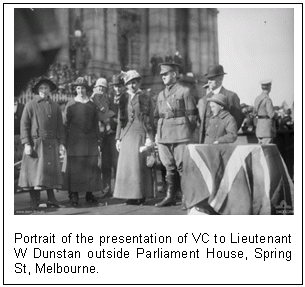Some time ago, I was asking around about Victorian Freemasons and Military awards with the view of colleting material for our ANZAC edition of Devotion News. If there is one Military award which creates quiet awe in me, it must be the Victoria Cross. Over the history of the British Empire since the Medal was struck in 1856 the medal has been awarded 1,356 times. This is in comparison to the Medal of Honor, struck in 1862, 3,454 have been awarded. Without taking anything away from the heroic winners of both awards, I would suggest the V.C. is more difficult to win.
WBro Peter Borland of Victorian Naval and Military Lodge No 49 forwarded a back issue of the lodge’s May 2009 newsletter containing an article on a VC winner who was a member of their lodge. I understand the article was written collaboratively by Peter who credits the bulk of the work to our friend Bro John Molnar. Space restraints stopped me from running it in April, but I am sure readers will find it of interest. Regards The Web Master.
~~~~~~~~~~~~~~~~~~~~~~~~~~~~~~~~~~~~~~~~~
At our regular April 2009 meeting, VWor. Bro. John Molnar presented a talk on a former member of the Lodge who was awarded the Victoria Cross and passed to the Grand Lodge Above some time ago. I’ve included a transcript of the talk for information of the readers.
He was William Dunstan was born on 8 March 1895 at Ballarat East. He was educated at Golden Point State School.
Before the outbreak of the Great War, he had been a messenger boy in a draper’s shop. He enlisted on 1 June 1915 with 7th Battalion. He embarked on 17 June 1915, and was promoted corporal on 6 August 1915 whilst already at Gallipoli.
On 6 August, the 2nd, 3rd and 4th Battalions attacked the Turkish position at Lone Pine, with the 1st and 12th Battalions in support. The assault very nearly succeeded in driving the Turks off the plateau which was fairly central to the whole ANZAC position. Without getting too detailed here, the attack got bogged down in the labyrinth of trenches. Many of the frontline Turkish trenches were roofed in and the Australian troops often had to make the support and auxiliary trenches before access to the system could be gained. It was easier to stand out in the open and fire on the Turks down in the trenches, but of course this left attackers fatally exposed themselves.
Once down in the trenches themselves, however, the Australians were lost in the labyrinth, and many casualties resulted from less than careful traversing of trench intersections, or even bends and turns in a trench concealing readied defenders. Inching their way deeper into the labyrinth, they were subjected to severe counter attacks in the immediate days following. Seventh Battalion came up to relieve the 1st and 2nd on the afternoon of 8 August. At dawn the next day the Turks made a determined counterattack on the centre of a newly captured trench held by Lt Tubb, Cpls Burton and Dunstan, and about 10 men. The Turks advanced up a sap, and blew in the sandbag barricade which had been built, leaving only one foot of it standing.
Lt Tubb with the two corporals repulsed the enemy whilst the barricade was rebuilt. Supported by strong bombing parties, the enemy twice again succeeded in blowing in the barricade, but on each occasion they were repulsed and the sandbags replaced. By that stage however, only Lt Tubb, and the two corporals remained. Lt Tubb was wounded in the head and arm. Burton was killed by a bomb whilst building up the parapet “under a hail of bombs”, and this bomb, landing in the midst of the little party, also blinded Dunstan. According to Bean’s official war history account, they were actually catching the bombs thrown by the Turks and throwing them back! Fortunately, a relieving party was on hand because one more attack by the Turks would have been successful.
Dunstan was blind for about a year afterwards. He was sent back to Australia on 1 February 1916, being discharged from service as at that date. He is later however noted as holding the rank of Lieutenant and I can’t work out when this promotion took place.
After the war, Bill Dunstan became the general manager of Keith Murdoch’s Herald & Weekly Times newspaper group. His son of course was the journalist Keith Dunstan.
Bill Dunstan was proposed into the Victorian Naval & Military Lodge by McKenzie Kirkwood and balloted as a member on 12 January 1922. He is noted as joining from St John’s Lodge No 36 (Vic Const) at Ballarat. His occupation is given as accountant. He was then living at 29 Glenhuntly Road, Elwood. He was then 26 years of age. He resigned on 12 August 1926 and given a clearance certificate.
He died on 3 March 1957. There is a memorial to him in Sturt Street, Ballarat, near Doveton Street. His VC is displayed at the Australian War Memorial, Canberra. There is available on the internet a video of the award ceremony at Parliament House in Melbourne on 9 June 1916, during which Dunstan was presented with the VC by the Governor –General of Australia, Sir Ronald Munro-Ferguson. The Age of 10 June 1916 reported:
“When the ceremony was over a determined rush was made at the young soldier, who was very much more nervous than he was when stopping the onset of the Turks at Lone Pine (I very greatly doubt that! – JM), and thereby saving a very dangerous situation. The men wanted to carry him shoulder high and the women to kiss him. Four tall constables rescued him, however, and he was then driven to the Overseas Club, where he was entertained by the women’s branch.”
The mind boggles! Certainly I am very glad to have had the opportunity of recalling the memory of this former member of our lodge at our meeting closest to ANZAC Day. The bravery of Bill Dunstan, and men like him, defies description. It is an almost incredible heroism – made all the more poignant because we must remember he was only 19 years old at the time!
|
Devotion Newsletter Content > Education & Editorial Articles > Some famous Australian Freemasons > Large List of Notable and Famous Australian Freemasons >






